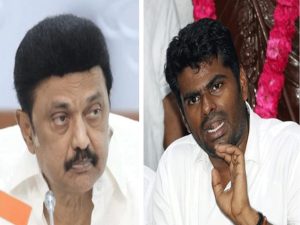
In a landmark decision, the Bombay High Court has ordered the immediate release of artworks by the celebrated artists Francis Newton Souza and Akbar Padamsee that were seized by the Customs department in 2023 on allegations of obscenity. This ruling, delivered on Friday, October 25, 2024, marks a significant victory for artistic freedom in India, emphasizing the distinction between nudity in art and obscenity. A Division Bench comprising Justices M.S. Sonak and Jitendra Jain set aside the earlier order issued on July 1, 2024, by the Assistant Commissioner of the Mumbai Customs. The Bench criticized the decision as suffering from “perversity and unreasonableness.”
The court noted that the Assistant Commissioner failed to recognize the crucial difference between expressions of sex in its artful form and obscenity that appeals to prurient interests. They deemed the forfeiture of these artworks as unsustainable, stressing that the freedom to assess art must lie beyond the subjective whims of an individual official. “Every nude painting or depiction of sexual intercourse does not classify as obscene,” observed the court, reinforcing the point that personal biases should not dictate the censorship or destruction of art that has received international acclaim and validation. The case arose from a petition filed by B.K. Polimex India Pvt Ltd., owned by renowned Mumbai businessman and art collector Mustafa Karachiwala. The Bench has instructed that the artwork be returned to the petitioner within two weeks.
In their deliberations, the judges remarked on the obligation of public officials to function within the constraints of law, rather than yielding their discretionary powers arbitrarily. They made reference to a seminal Supreme Court judgment from 60 years ago which asserted that iconic figures in art, like the angels and saints of Michelangelo, should not be subject to unnecessary censorship.
. Yet ironically, in 2024, the Assistant Commissioner for Customs ordered the seizure of seven drawings from internationally revered artists on the baseless claim of obscenity, relying purely on personal interpretations devoid of expert insights.
The High Court admonished the Customs department for not consulting art experts or considering any of the comprehensive materials and testimonies provided by the petitioner. The lack of engagement with specialist opinions was deemed indicative of an arbitrary approach — the Assistant Commissioner assumed anything with nudity was obscene by default, the court noted. Importantly, the court emphasized that public officials must provide justified and well-reasoned actions especially in matters intersecting with constitutional rights, such as freedom of artistic expression.
On October 21, 2024, before giving their final verdict, the courts had placed an order preventing the destruction of these notable artworks. The petition had raised questions about the legality of the Customs department’s initial decision last July, which had fined the petitioner’s company ₹50,000 while categorizing the artworks as “obscene material.” Lawyers Shreyas Shrivastava and Shraddha Swarup, representing B.K. Polimex India Pvt Ltd., argued that the confiscation was arbitrary and not in accordance with constitutional protections for artistic expression. They contended that the Customs department acted beyond its jurisdiction and against Indian cultural norms that value and protect diverse expressions in art.
The interesting backdrop to this legal skirmish lies in the April 2023 seizure by Mumbai Customs of a consignment that consisted of seven artworks, including a set of four erotic sketches by Souza, with one titled ‘Lovers’. The consignment also included a ‘Nude’ drawing and two photographs by Padamsee, which were acquired from auctions in London by Karachiwala’s firm. This incident now serves as a cautionary tale about the power of public authorities and the imperative need for balancing regulation with respect for cultural and artistic expression. Through this decision, the Bombay High Court has reinforced the foundational democratic ideals that underpin India’s rich artistic heritage, ensuring that art remains a vibrant channel of expression that transcends personal prejudices and societal constraints.












